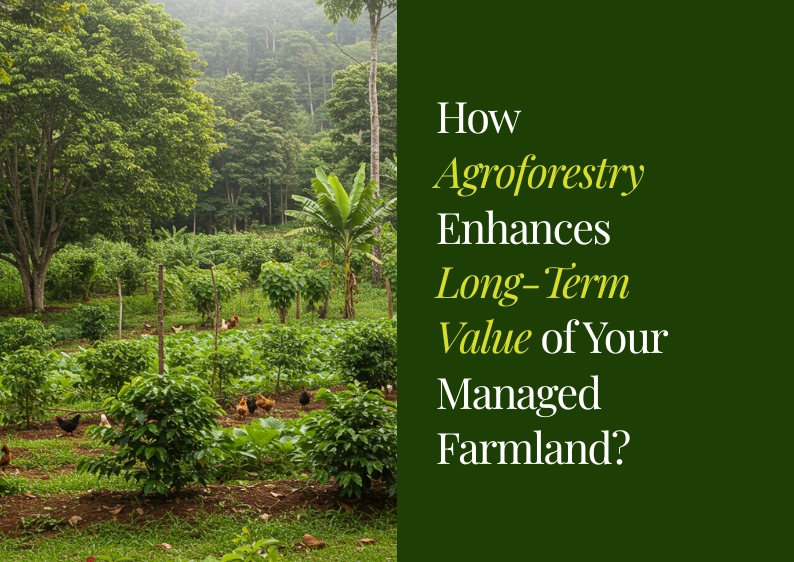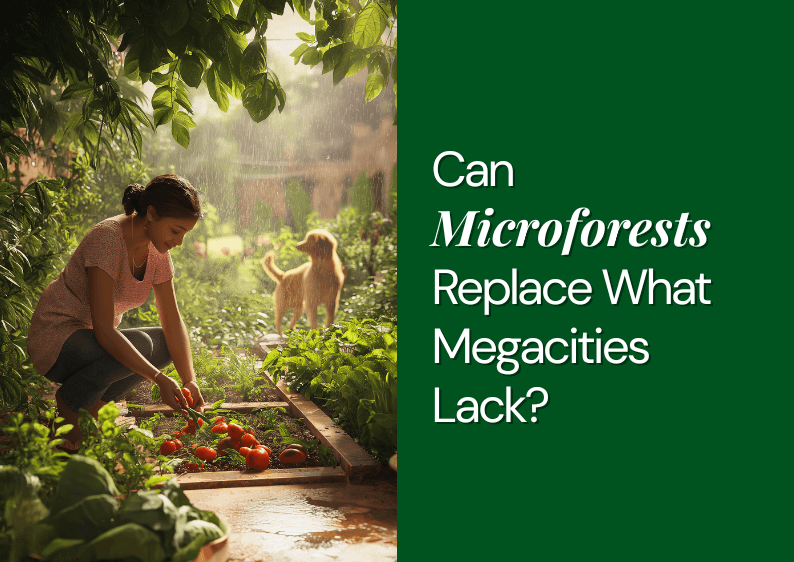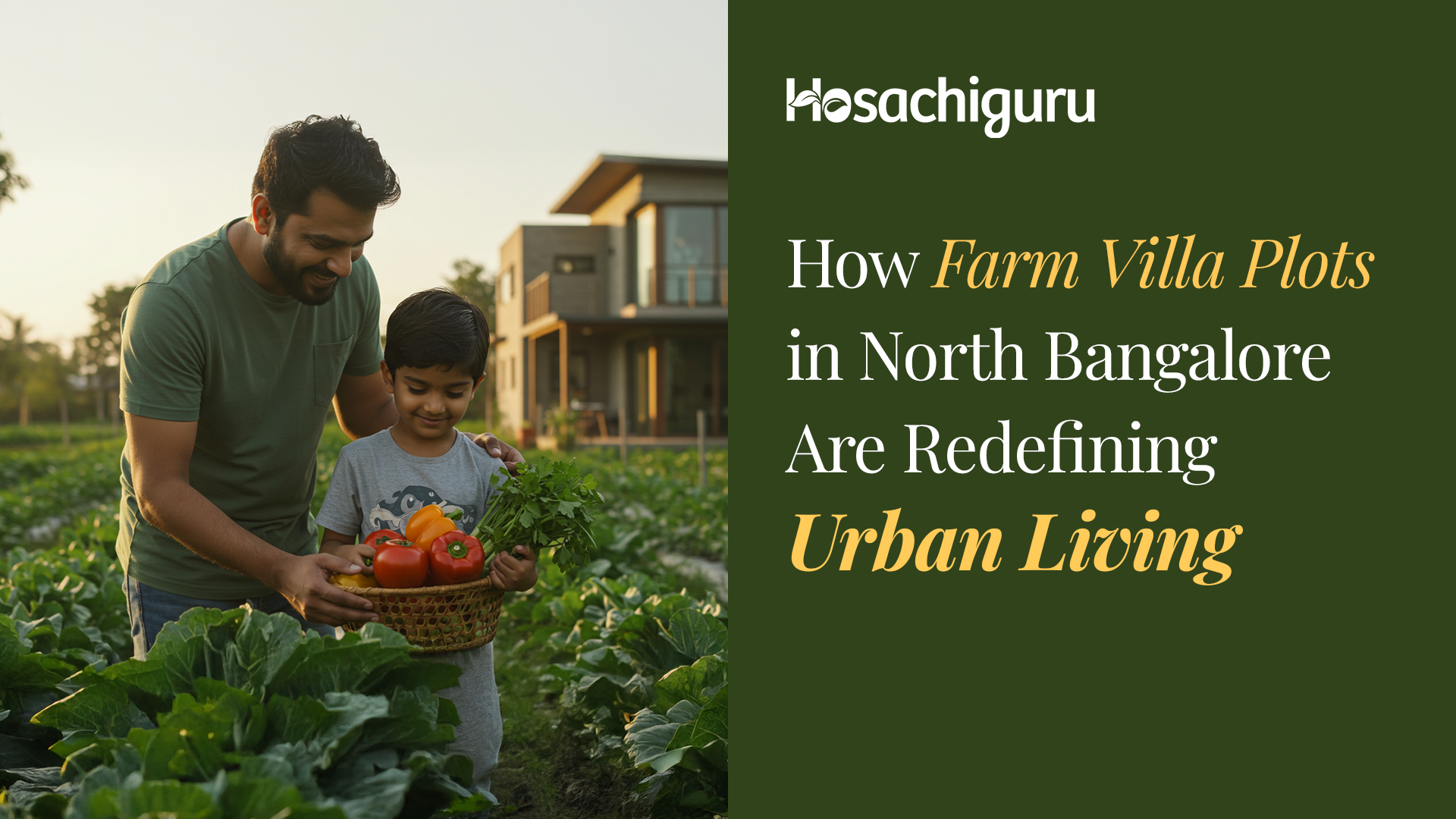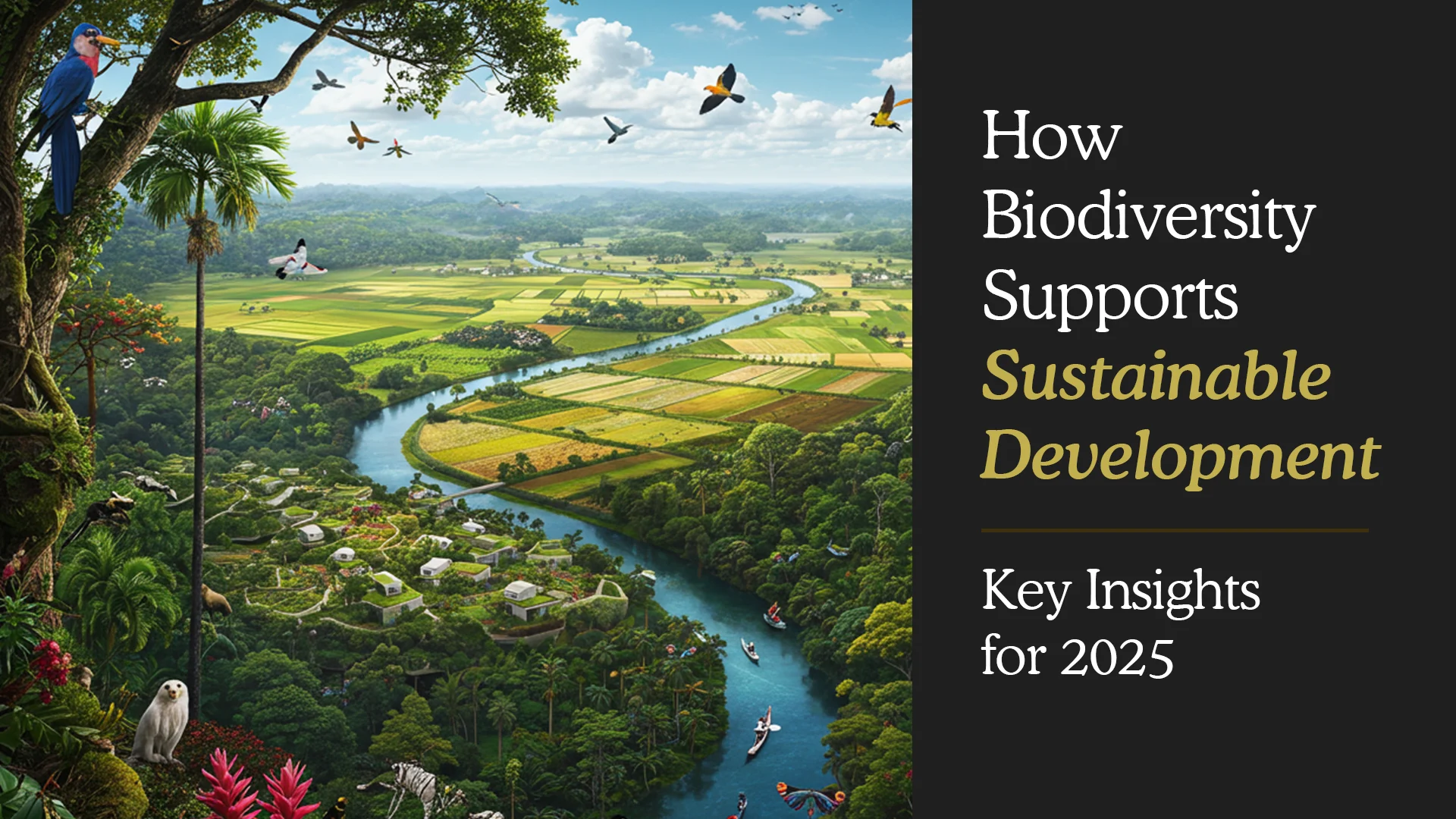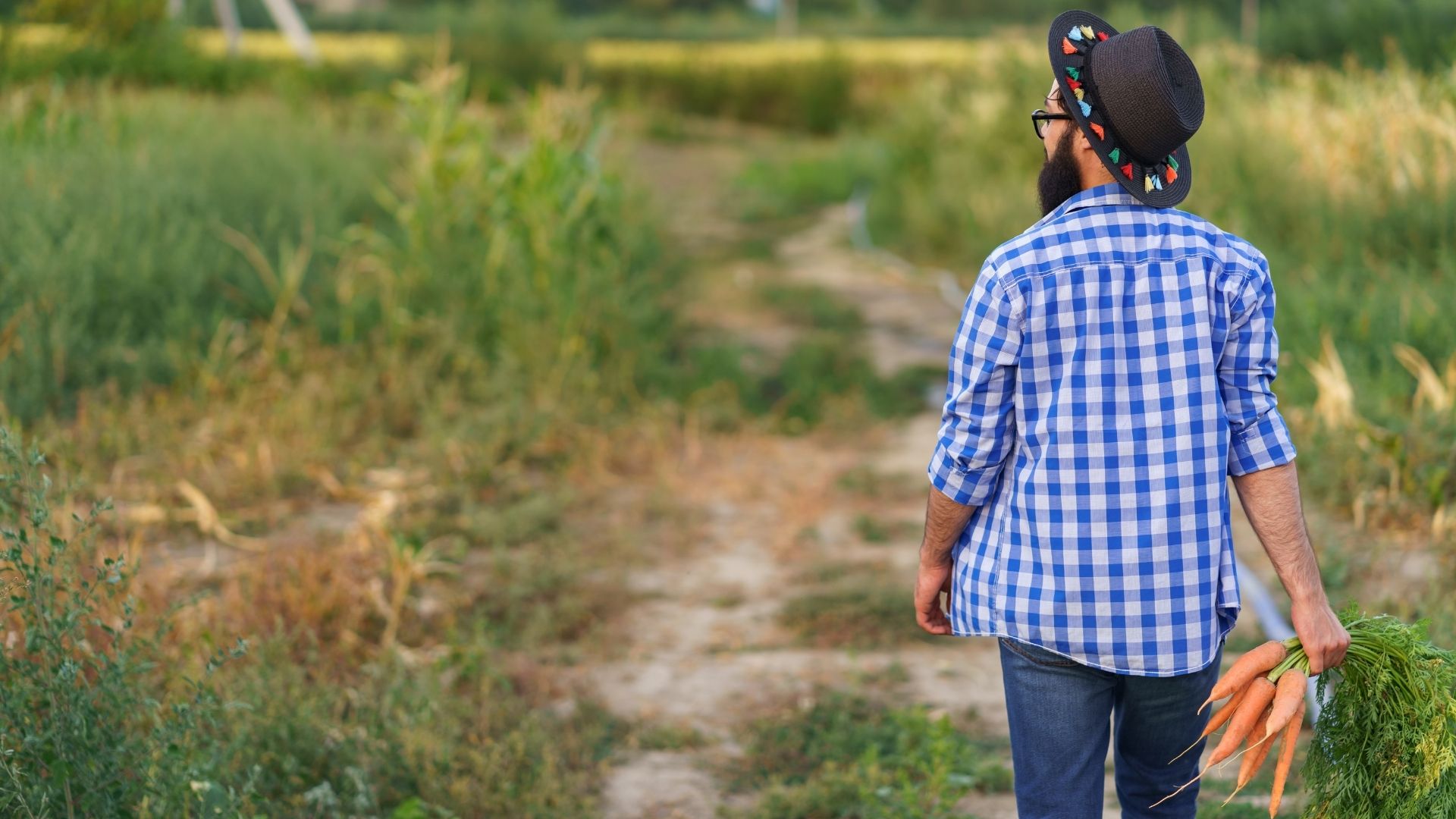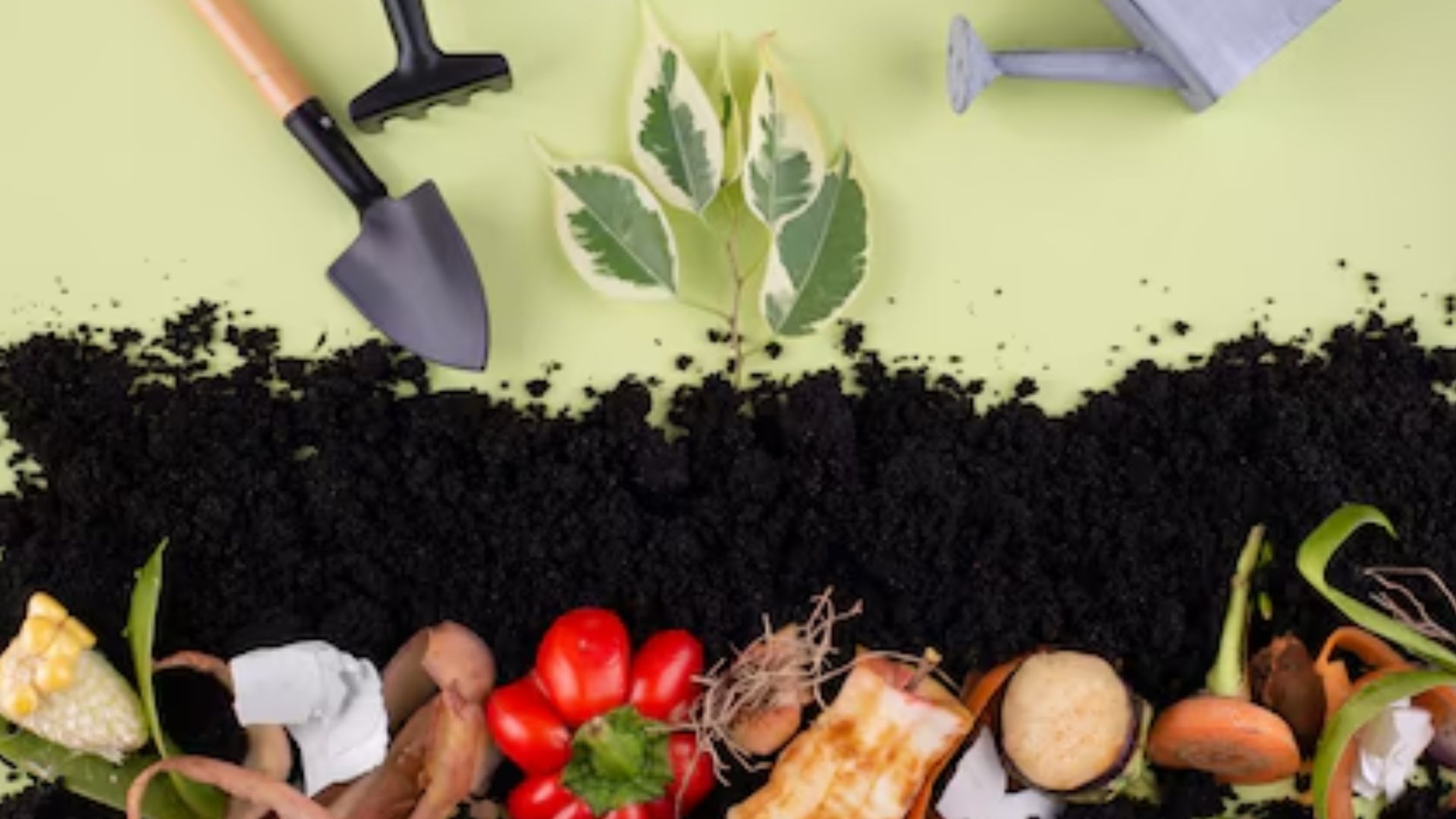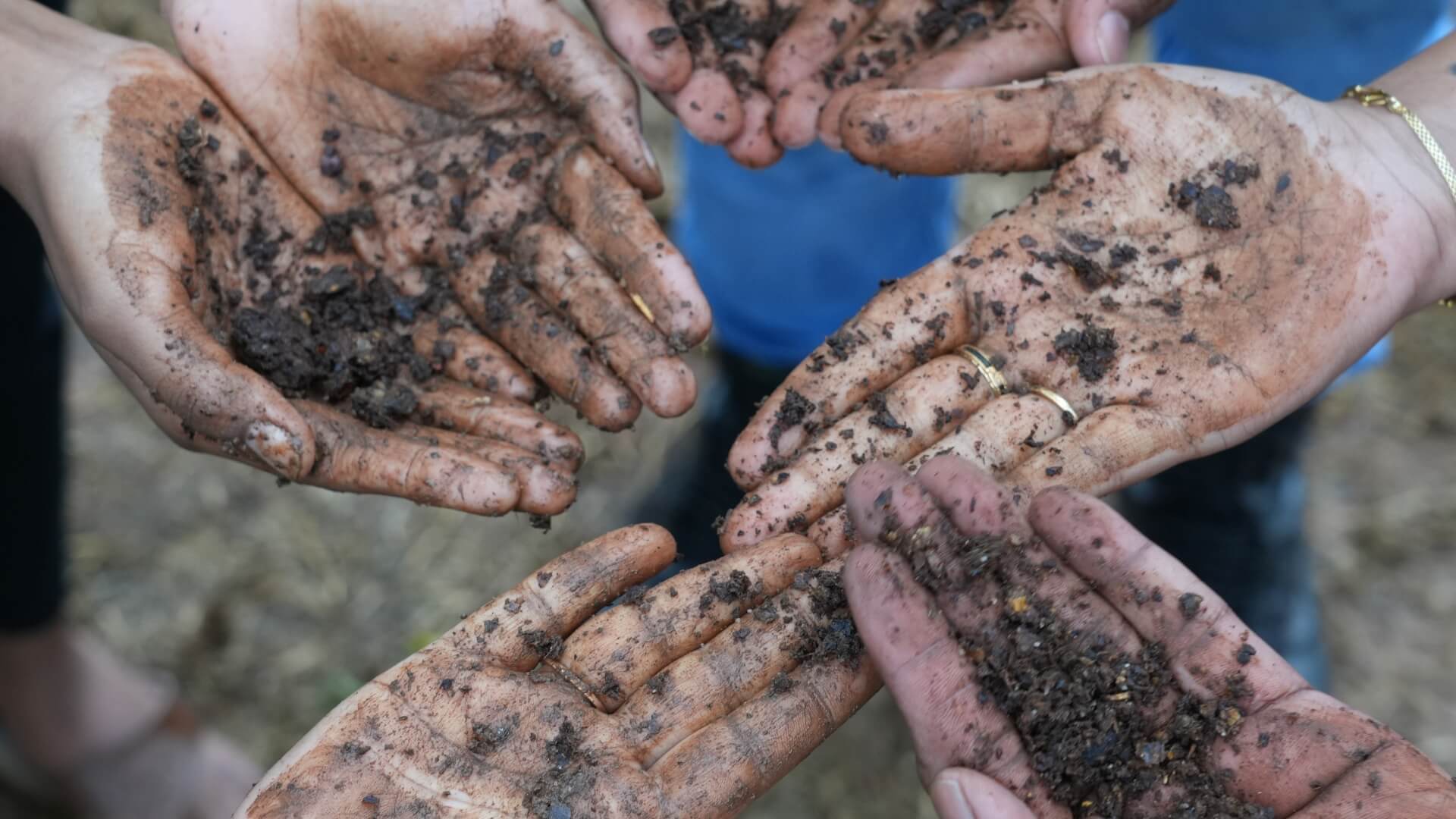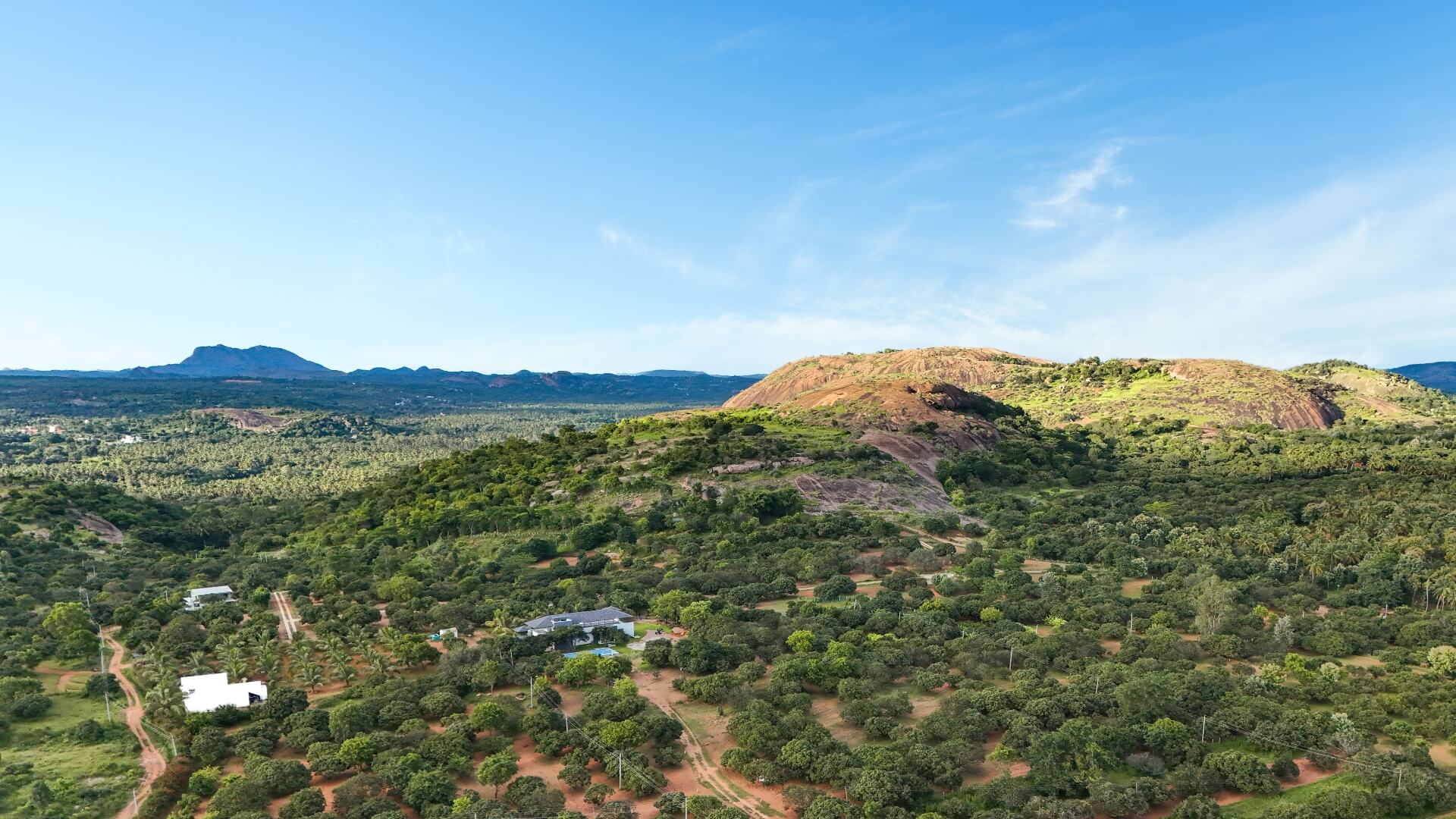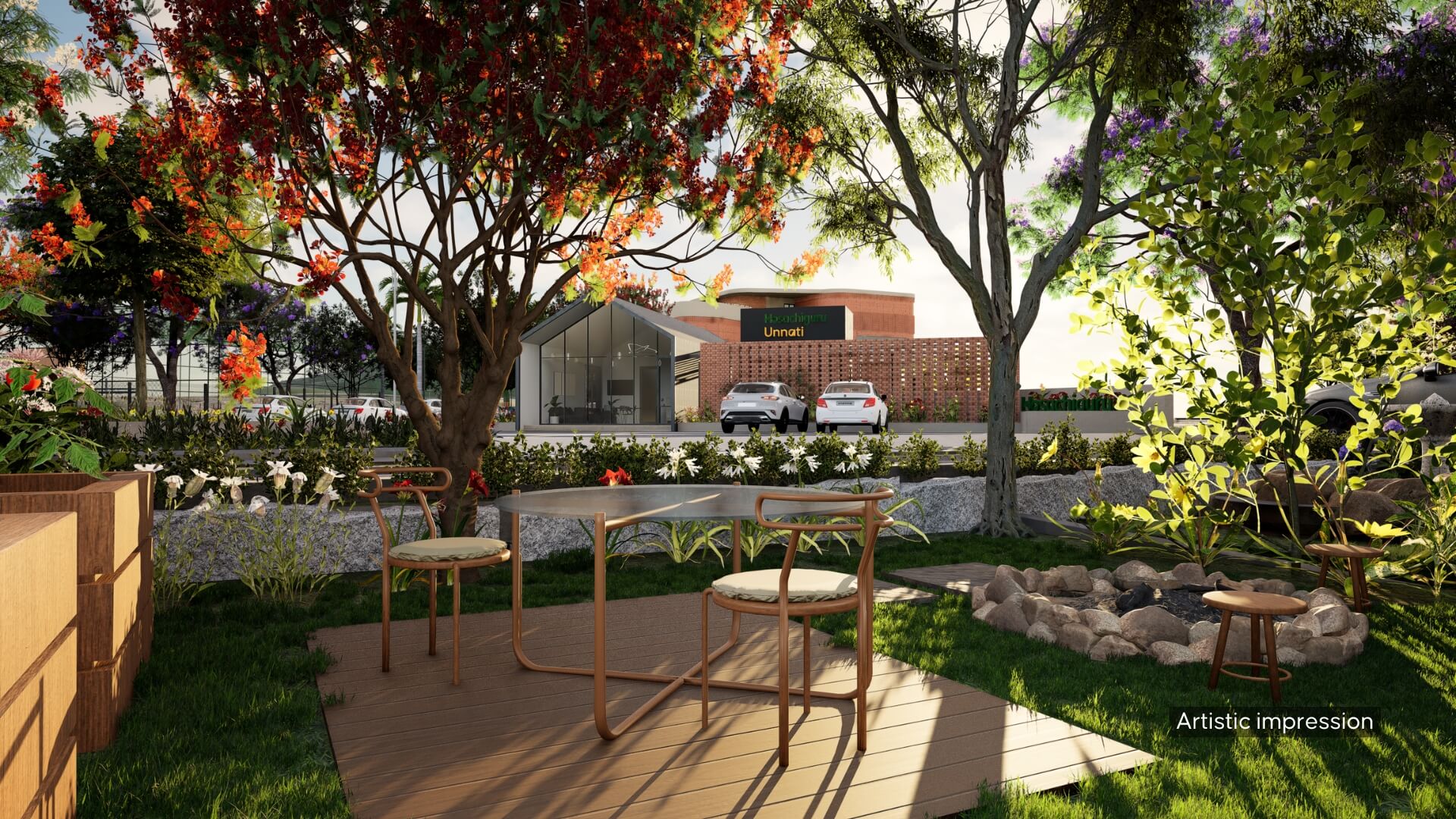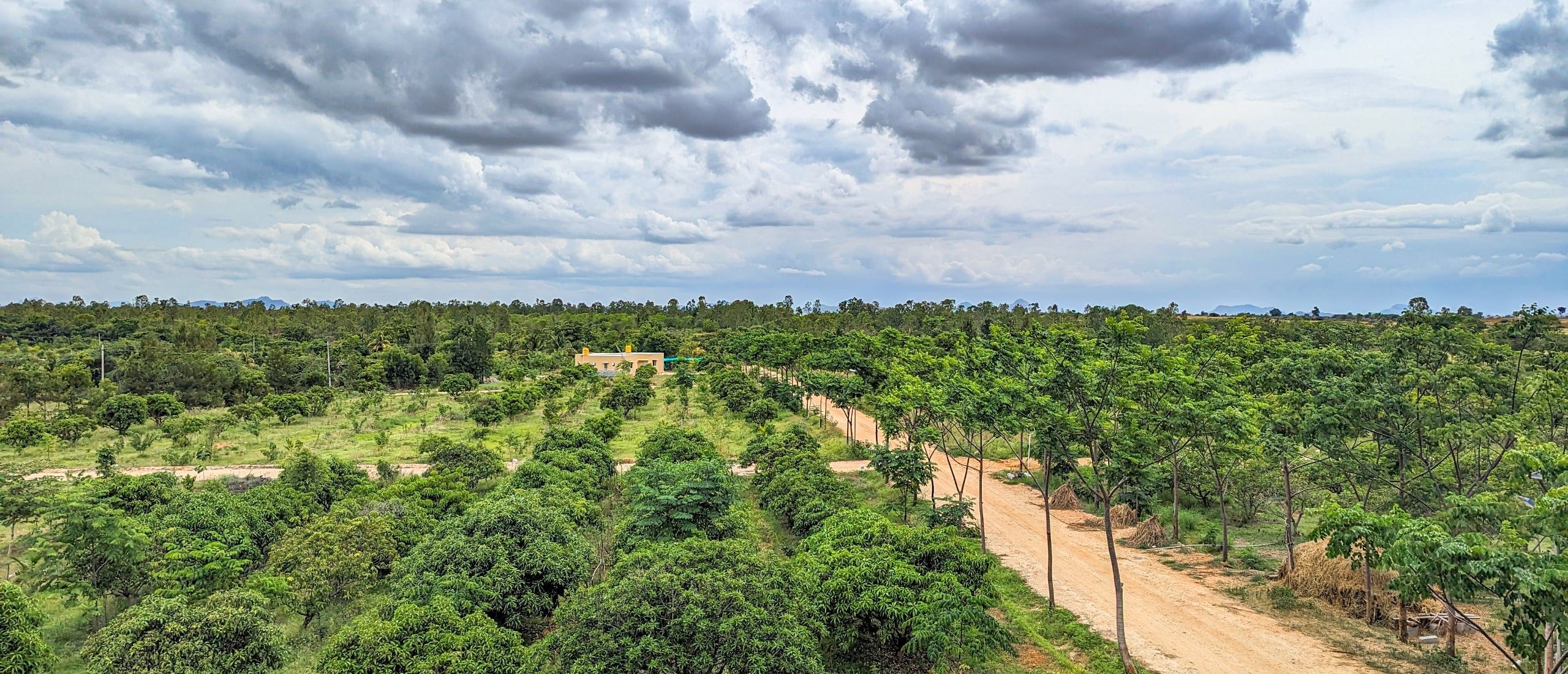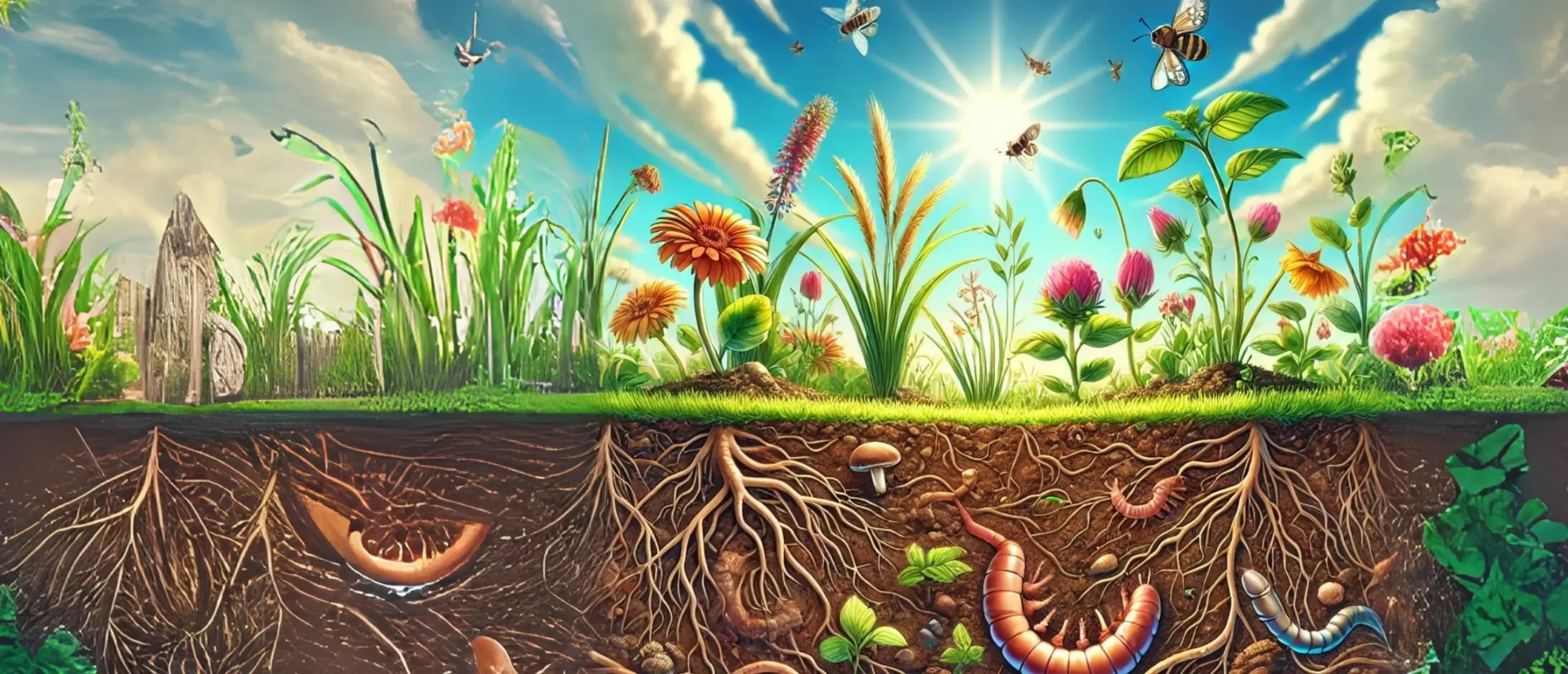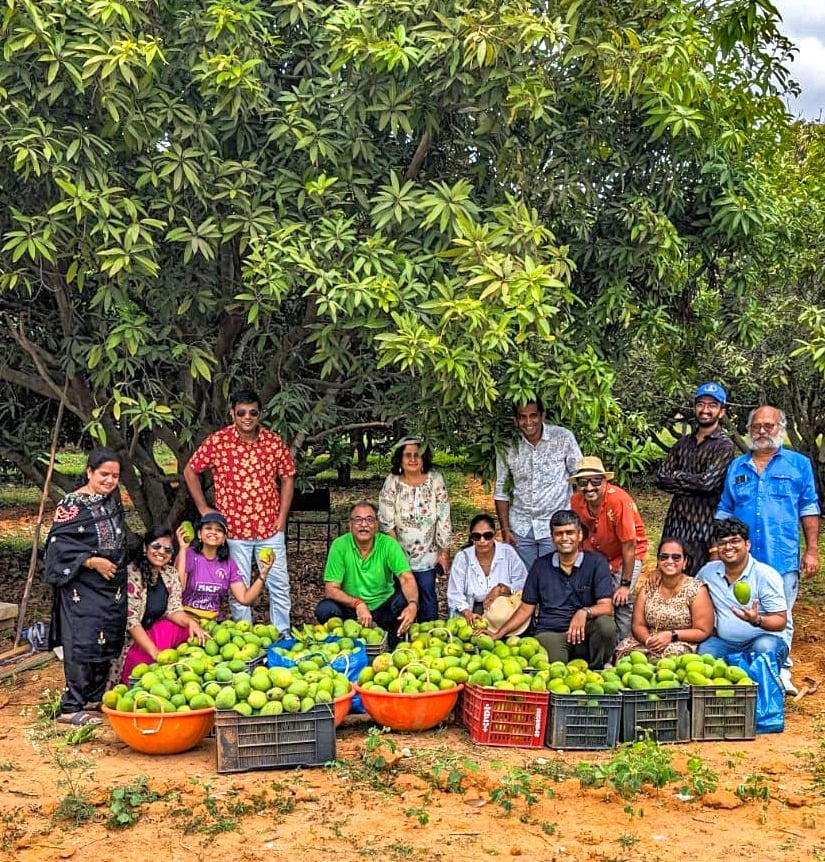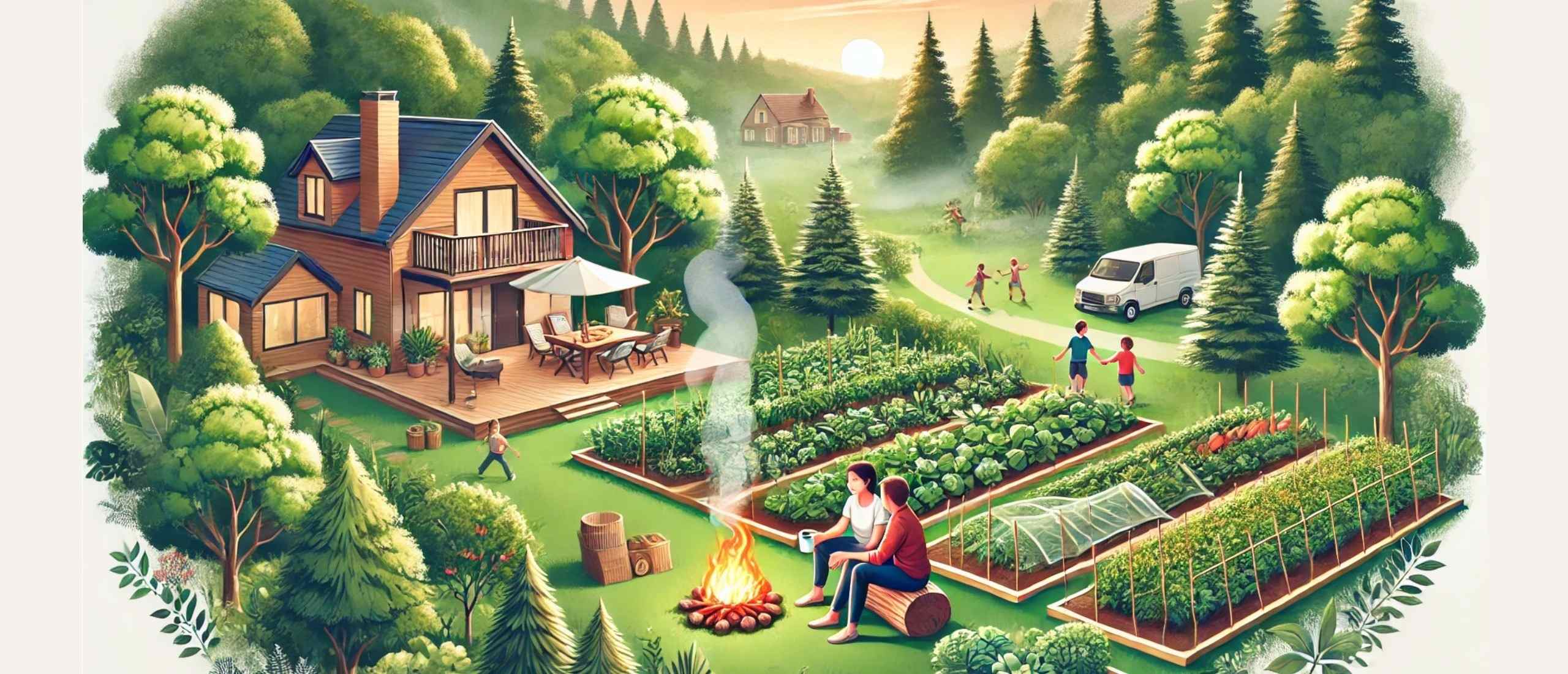October 12, 2023
Author – Srinivas Abhilash
Reading Time: 7 mins
The blog showcases food forests as sustainable solutions for abundant organic produce, biodiversity, and community resilience.
Introduction: A World in Crisis
In today’s world, the essence of what we consume is under threat. Widespread food insecurity, unreliable food sources, preservatives in packaged and processed foods, the prevalence of fake and adulterated products, and alarming nutritional deficiencies are haunting issues in our communities. We find ourselves at the mercy of a food system that often prioritizes profit over health, leaving us vulnerable and uncertain about the quality of what we eat.
Empowering Our Nutritional Destiny
Amidst these challenges, there exists a powerful solution: taking control of our food supply through Food Forests and embracing freedom. Unlike traditional gardens, food forests require minimal upkeep once established.
This is a place where you don’t just grow food, but cultivate an entire ecosystem and nurture with ease where trees, plants, shrubs, bushes, etc support one another, allowing you to indulge in leisure activities, spend quality time with your loved ones, and truly savor the fruits of your labor – all while nature takes care of itself.
In this scenario, you’re not merely a consumer; you’re a cultivator, defining the authenticity and purity of your nourishment. Food forests that are created and nurtured based on Permaculture ethics and principles, shine as beacons of empowerment. These deliberately nurtured forest gardens are more than green patches; they are reservoirs of sustenance and healing.
The Essence of Food Forests
Traditional agriculture has oversimplified our once diverse and layered landscapes, reducing them to vast, flat fields devoid of the intricate complexity found in natural forests. At a glance, traditional agriculture is straightforward, often involving monocropping. However, beneath this simplicity lies a stark truth: we are failing to utilize our land optimally. Unlike in a natural forest or a food forest ecosystem, where life flourishes in intricate layers, traditional agriculture lacks this richness.
In these flattened fields, the magic of biodiversity, thriving ecosystems, and optimal land use is absent. Unlike food forests, where food-producing trees dominate and create a harmonious environment, traditional agriculture fails to tap into the land’s full potential. The layers in a food forest play host to a myriad of life forms, supporting various plants and animals. From the intricate process of photosynthesis to the abundant biodiversity and impressive biomass production, everything occurs in harmony within these layers.
Comparatively, traditional agriculture pales in comparison to the multifold wonders of a layered ecosystem. The loss of this complexity due to oversimplified farming practices is a testament to the missed opportunities for sustainable agriculture and thriving ecosystems.
This vertical diversity in food forests not only demands minimal maintenance (pruning, pest management, fertigation, irrigation, etc) but also yields a rich array of produce. Food forests go beyond low-maintenance landscapes; they blend native and cultivated plants, providing human yields while supporting vital ecological roles. Replicating natural forest balance, they offer sustainable nutrition, becoming self-sustaining sources through diverse plant layers, securing our needs amid uncertainties.
The Natural Path to a Food Forest: How Land Transforms
Think of land like a storybook, starting as a barren place filled with weeds (the term weed is precisely used in an agri-production context. In the forest, everything is herb). Over time, it changes into growing grasses, shrubs, and then tall trees, forming a thriving forest.
1. Stages of Growth:
The land begins rough, with weeds, and gradually gets better, turning into grassy areas and shrubs. Eventually, it becomes a dense forest of tall trees.
2. Decaying Leaves and Soil Change:
Leaves fall, and tiny creatures break them down, adding carbon to the soil. This makes a big difference. At first, bacteria rule the soil, but then fungi take over, making the soil healthier.
3. Fungi’s Important Role:
Fungal networks, resembling nature’s internet, dominate the soil, weaving a complex web of life beneath the surface. This transformation enhances the soil’s health and vitality. The fungal networks contribute to increased biodiversity above the soil, creating a vibrant habitat for various plants, insects, and animals.
4. Amazing Changes:
This transformation brings good things. Water goes deep into the soil, keeping plants healthy. The soil becomes strong, preventing erosion. Also, it creates humus, making the soil very fertile.
5. Building a Food Forest:
By understanding this natural process, we can turn depleted land into a lush food forest. By working with nature, anyone can transform degraded land into a thriving ecosystem. Through thoughtful planning, planting a diverse range of vegetation, and allowing the natural processes of decomposition and succession to unfold, individuals can actively contribute to the restoration of the land.
Role of Biodiversity in a Forest Ecosystem to Maintain Stability
In diverse forest ecosystems, different species interact and depend on each other for survival. Here’s how biodiversity contributes to stability:
- Erosion Prevention: Diverse root systems bind the soil together, preventing erosion. Plants with different types of roots help stabilize the soil structure.
- Pollination and Reproduction: Biodiverse forests often host a variety of pollinators, ensuring the reproduction of plant species. This is vital for the regeneration of the forest.
- Pest and Disease Control: Diverse plant and animal species can act as natural predators for pests and diseases, preventing any one species from overwhelming the ecosystem.
- Nutrient Cycling: Various plant species have different nutrient requirements and deposition rates, ensuring efficient nutrient cycling within the ecosystem. This helps maintain soil fertility and supports plant growth.
- Food Web Complexity: Biodiversity supports a complex food web where different species rely on each other for food. This interdependence ensures that no one species overconsumes resources, maintaining a balance in the ecosystem.
- Resilience to Disturbances: Biodiversity ensures that if one species is affected by disease or a natural disaster, others can thrive, preventing the entire ecosystem from collapsing.
- Climate Regulation: Different plants absorb varying amounts of carbon dioxide and release oxygen. Biodiversity helps in regulating the climate by absorbing greenhouse gases, thereby mitigating the impacts of climate change.
How to Identify a Food Forest?
- Diverse Plant Life: Food forests feature a variety of plant species, including fruit and nut trees, shrubs, herbs, and climbers. Look for a mix of plants at different heights and densities just like in a forest you get something throughout the year, diverse species – diverse fruiting- throughout the year.
- Layered Structure: Observe the forest’s structure. A forest consists of multiple layers for maximum usage of space and the creation of microclimates. A food forest has distinct layers like canopy (tall trees), understory (smaller trees and shrubs), herbs, ground covers, and climbers. This vertical diversity indicates a food forest. Let us identify the layers individually
7 Layers of a Food Forest
-
-
- Canopy (large fruit and nut trees)
-
-
-
-
- Their towering presence offers shade, shelters wildlife, and yields fruits and nuts while maintaining the forest floor’s moisture, fostering the growth of other plants below.
-
-
-
-
- Low Tree Level (dwarf fruit trees)
- Dwarf fruit trees produce accessible fruits without towering, filling the space between canopy and shrub layers, enhancing food forest diversity and efficient space use.
- Low Tree Level (dwarf fruit trees)
-
-
-
- Shrub Layer ( currants and berries)
- These vibrant shrubs offer colorful fruits, attracting birds, foragers, and pollinators, enriching the forest’s atmosphere. Their low height aids wind protection, and moisture retention, and supports a healthy ecosystem.
- Shrub Layer ( currants and berries)
-
-
-
- Herbaceous Layer
- Near the ground, the herbaceous layer thrives with herbs like basil and vegetables such as lettuce, showcasing culinary diversity and medicinal benefits. This layer attracts beneficial insects, aiding natural pest control.
- Herbaceous Layer
-
-
-
- Soil Surface (ground cover crops)
- Ground cover crops like clover and thyme act as natural mulch, protecting soil, preventing erosion, and enhancing fertility. They conserve moisture, suppress weeds, and create a lush, visually appealing forest floor.
- Soil Surface (ground cover crops)
-
-
-
- Rhizosphere (roots)
- Below the surface, plant roots form the rhizosphere, stabilizing soil, preventing erosion, and enhancing nutrient exchange. They create vital water channels, ensuring plant well-being and forest resilience.
- Rhizosphere (roots)
-
-
-
- Vertical Layer (Climbers and Vines)
-
-
-
-
- Climbers like grapes and passionfruit elegantly adorn trees, utilizing vertical space, showcasing nature’s efficiency, and providing habitats for wildlife. They yield fruits, nuts, and flowers, enhancing the food forest’s aesthetic appeal.
-
-
- Natural Patterns: Food forests mimic natural ecosystems, so watch for patterns resembling those in nearby forests. Natural arrangements, not orderly rows, characterize food forests.
- Wildlife Presence: Healthy food forests attract diverse wildlife like birds, insects, and small animals due to the abundance of plant life. Observing these interactions indicates a thriving ecosystem.
- Minimal Human Intervention: Food forests are self-sustaining once established. If you notice minimal human interference like pesticide use or excessive pruning, it might be a food forest.
- Harvestable Plants: Food forests are designed for human consumption. Look for edible fruits, nuts, and herbs growing alongside other plants. These indicate a purposeful cultivation for food production.
Biodiversity: A food forest encourages biodiversity. If you notice a wide range of plant species and symbiotic relationships (like nitrogen-fixing plants), it likely represents a food forest ecosystem.
Establishing and Maintaining a Food Forest
Creating a food forest involves a phased approach, beginning with meticulous planning. During the initial stage, assess the available space, considering factors like sunlight, soil quality, and drainage. This planning phase, though time-consuming, is fundamental as it sets the foundation for the entire ecosystem.
- Planning (Months 1-3): Research your local climate, select thriving native plants, and design a layout mimicking natural forests with layers like canopy trees and ground covers. This stage, vital for the project, takes weeks to months based on its scale.
- Planting (Months 3-6): After planning, start planting following regional and climatic guidelines. Begin with canopy trees, then understory trees, shrubs, and ground covers, ensuring proper spacing and soil preparation. Planting, especially with manual labor or small teams, may take several months.
- Establishment and Maintenance (Months 6 Onward): After planting, the food forest requires time to establish. Regular watering, mulching for moisture conservation, and routine tasks like pruning, weeding, and pest monitoring are crucial. The establishment can take over a year or two, and ongoing maintenance is continuous.
Long-Term Benefits
Initially, during the first 2-3 years of its growth, a food forest undergoes significant changes and developments, leading to a range of long-term benefits:
- Soil Improvement: The process begins with the natural mulch and decaying plant matter, enriching the soil right from the start. Over time, this continuous enrichment enhances the soil’s fertility and structure.
- Increased Biodiversity: As the food forest matures, it evolves into a thriving ecosystem. The diverse range of plants attracts various birds, insects, and beneficial organisms, contributing significantly to the overall biodiversity of the area.
- Resilience: Over time, food forests gain resilience, with deep-rooted plants preventing erosion and retaining water, ensuring stability in adverse weather.
- Abundant Harvests: Within 2-3 years, mature food forests yield abundant organic produce, including fruits, nuts, vegetables, and herbs, ensuring a continuous supply.
- Economic Benefits for Farmer/Land Owner: Mature food forests reduce reliance on external resources, eliminating the need for fertilizers, pesticides, heavy machinery, and purchased seeds. They require minimal irrigation and labor, ensuring a stable, diverse yield.
- Ecological Impact: Mature food forests repair hydrological cycles, build topsoil, restore forests, enhance wildlife habitats, and combat climate change, emphasizing their crucial role in both immediate sustenance and long-term environmental health and stability.
























